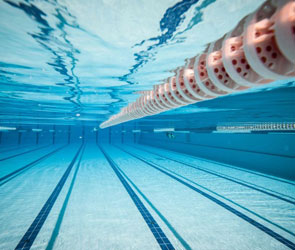How to Winterize Your Pool
2020-09-17
When summer/swimming season comes to an end, it makes both the owners and users of the pool extra sad to see it go. Now, you can’t help but think of how difficult it will be to close
and winterize your pool for the colder months. Don’t worry about that. Read on to find out the easiest and quickest ways to keep your pool in top shape for next year.

1.Water Chemistry - Repeat the chemical mantra- check your pH levels, calcium levels, and your TA (total alkalinity) levels to protect the surface of your pool from unnecessary stains
and scratches. You might want to consider using our value winterizing kit directly to the water to keep it crystal clear for next year. Please read the manufacturer’s instructions thoroughly
on how to complete this process.
2. No Floaters - It is ill advised to use a strong oxidizer floater such as chlorine or bromine to close your pool. This will actually cause you more problems because it might stick to your
pool walls. If you have a vinyl liner- it could possibly stain or bleach them.
3. Freezing Water - As the temperatures continue to drop for the colder months, and you opt not to drain the pool directly- water will expand when frozen. Depending on where you are
located, no one can predict if the temps will drop below 0 any given day. It is necessary to prep for this in the meantime.
4. Lower Water Levels - We recommend lowering the water levels below the mouth of the skimmer. This will prevent the water from freezing and trapping debris where it shouldn’t be.
Obviously circulating frozen water is out of the question, so this is your next best bet.
5. Aquador - Consider purchasing an aquador to place over the mouth of the skimmer. This small plastic dam will keep water away from it, giving you full control of the water level during
the winter.
6. Drainage - Drain all of the water left over in your filter, pump, and hoses. Please follow these steps to proceed:
- Place a plug in the return fitting (this is where the water returns to the above ground pool.)
- Disconnect the hoses from the pump and filter system. This will allow proper drainage.
- Your filter should have a plug towards the bottom that will allow the water to drain. Place the multiport valve in the closed or ‘winterized’ position and remove the pressure gauge.
- Drain the pump after you remove the drain plugs. You may/may not have 2 plugs to contend with depending on the design. Once the pump is clear of water, turn it on for a moment to
- sure there is no additional leftover moisture. However,if you run the pump for too long,you might burn it out. Keep it for 1-2 seconds maximum. Take the pump inside to protect it from the winter.
- Remove all chemicals such as chlorine and bromine tablets out of the feeder. If you happen to leave them in over the winter months, it can actually damage your other pool equipment.
- Once this is finished you can drain the chemical feeder.
- It is a good idea to place the plugs directly in the pump basket to keep track of their location for next year.
- Place your pressure gauge inside a warm, enclosed area to keep it dry and free of moisture. You do not want to risk water freezing and breaking the gauge.
- Do not place the plugs back on the equipment. If any type of moisture is caught in the plugs, they will not be able to drain properly.
7. Pool Cover - The last and crucial step to close/winterize your pool is to cover it completely.This will prevent debris, dirt, and other annoying substances from harming your pool over
the winter season.You can choose from any of our specialized winter covers to do this. You also might want to consider purchasing air pillows. They will hold the cover up like a dome
to keep the water and debris off the top.
www.rhondachem.com | info@rhondachem.com | With us your money in safe,your business in safe.
